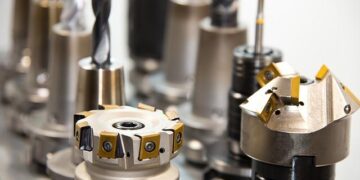The Sparc fusion reactor will require 10,000 kilometers of this high-temperature superconducting tape.
On the site of a former U.S. Army Reserve base near Boston, an unusual structure is rising from the rolling hills.
Brandon Sorbom, the scientific director of Commonwealth Fusion Systems (CFS), leads me toward the center of the building’s cross-shaped footprint, weaving among scaffolding, forklifts, and teams of welders and painters. Descending a stairway to a deep basement walled with 2.5-meter-thick concrete, he gestures toward a large, circular hole at the center of the room’s high ceiling, its edges supported by four stout columns.
“Within a few months, if we stick to schedule, that’s where the Sparc tokamak will nest,” Sorbom says. Surrounding a doughnut-shaped vacuum chamber, a 3-meter-tall stack of high-temperature superconducting magnets will create a powerful magnetic field to squeeze and corral a swirling, superheated mass of hydrogen plasma. Mimicking the process that fuels the sun, the hydrogen ions—isotopes called deuterium and tritium—will accelerate and collide with such force that they fuse into helium and release highly energetic neutrons.
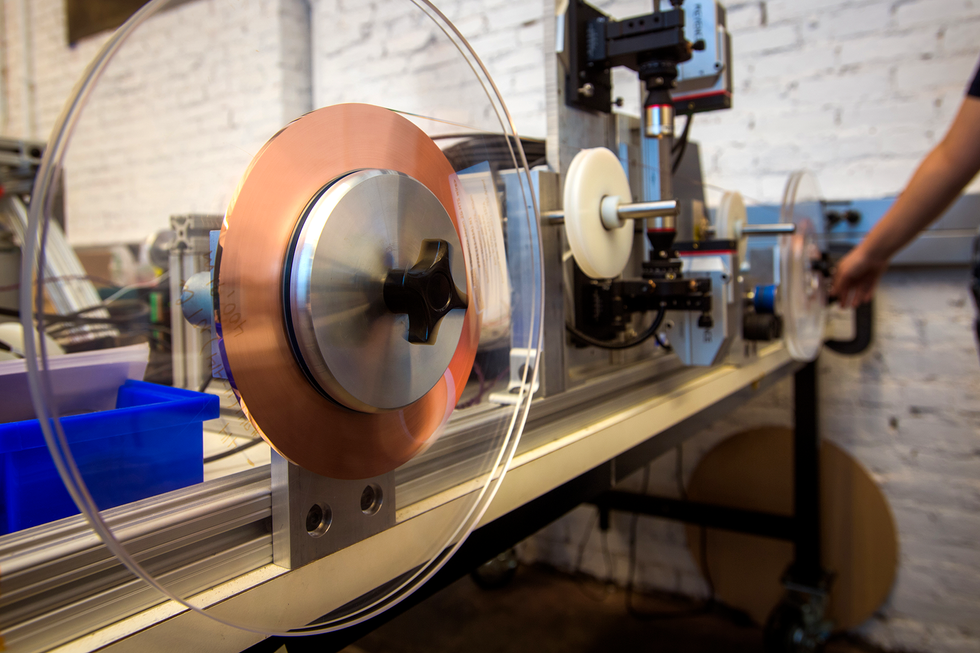
CFS, a startup spun out of decades of research at the
Massachusetts Institute of Technology (MIT), is among the leaders of a new wave of fusion-energy projects that have emerged in the past decade, taking advantage of technological advances as well as a surge in private-sector investment. Fusion-energy companies have now raised more than US $5 billion, the majority of it since 2021, according to Andrew Holland, the director of the Fusion Industry Association. These companies all intend to demonstrate positive energy gain—to get more energy out of their reactions than is used to trigger them—by the end of the decade.
“At that point, we’ll be one step closer to a new era of carbon-free baseload electricity,” says Sorbom. “We just hope we can do it in time to be a major part of the solution to the climate crisis.”
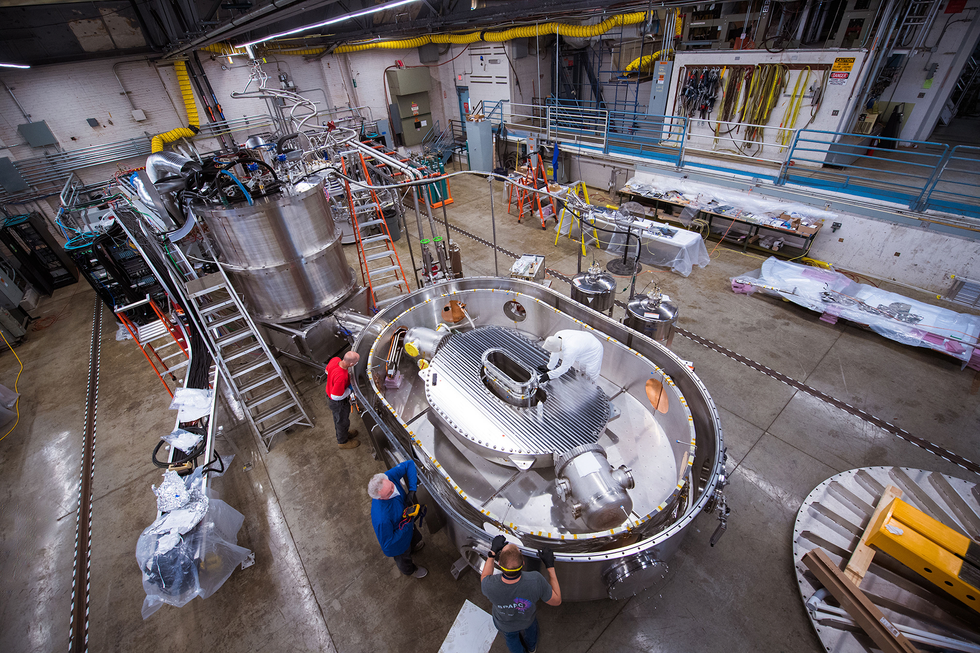
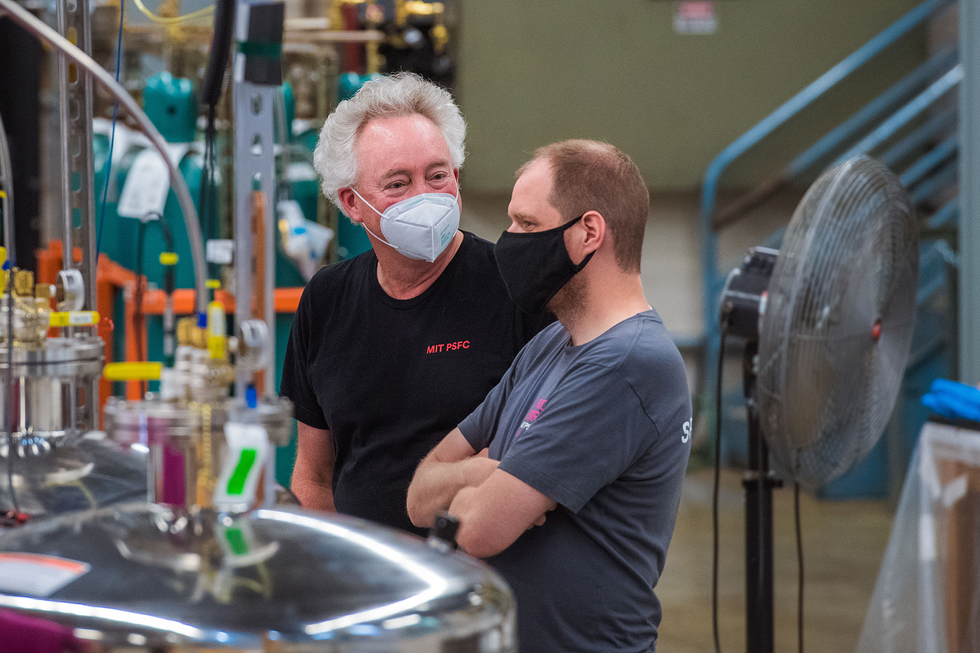
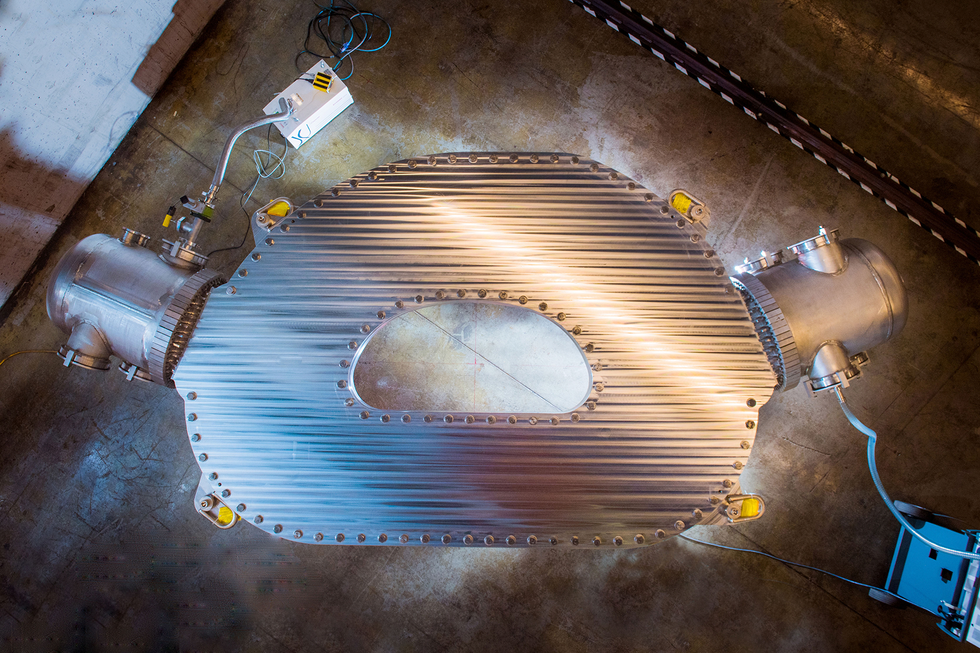

What sets CFS’s technology apart is its use of high-temperature superconducting tape, which is layered and stacked to create extremely strong electromagnets that will shape and confine the unruly plasma and keep the bulk of the charged particles away from the tokamak’s walls. The company believes that this novel approach will allow it to build a high-performance tokamak that is much smaller and less expensive than would be possible with previous approaches.
Icy Hot Fusion
Currently, there are two main research avenues to fusion energy.
Magnetic confinement uses electromagnets to confine plasma, typically inside a tokamak. Inertial confinement compresses and heats a target filled with fuel—often using lasers—to kick-start a reaction.
Progress on both approaches is accelerating, due to advances both in materials science and in high-speed computing, modeling, and simulation. Among the magnetic-confinement crowd, CFS leads the pack in fundraising, having secured
more than $2 billion to build its Sparc pilot plant.
In general, superconducting materials can conduct direct-current electricity without resistance and energy loss when cooled below a critical temperature. High-temperature superconducting (HTS) magnets, as the name suggests, can superconduct at much higher temperatures than the superconducting magnets traditionally used in tokamaks, which typically need more complex and expensive cooling systems involving liquid helium. Although “high temperature” might suggest something that could burn you, HTS materials operate in a range of
20 to 77 kelvins (around –200 to –250 °C). That’s still cold, but it’s much warmer than what’s needed for typical superconductors, which can only function at temperatures close to absolute zero.
“These new materials are allowing a new path to fusion energy, because in addition to their superconducting abilities at higher cryogenic temperatures, they are also able to go to very high magnetic fields,” says
Scott Hsu, a senior advisor at the U.S. Department of Energy (DOE) and the agency’s lead fusion coordinator. “These properties provide the possibility to design smaller, less complex, and lower-cost fusion systems that are quicker to build and easier to take apart for maintenance.”
Compact tokamaks like CFS’s could
reverse the developmental trends that have dominated the last 40 years of fusion energy, which have fixated on building bigger and bigger machines. The largest by far is Iter, a collaborative international effort to build a massive tokamak in Cadarache, France. Under construction since 2013, the Iter fusion experiment (formerly called the International Thermonuclear Experimental Reactor) has devoured the majority of the world’s public funds dedicated to fusion-energy research.The Iter Organization overseeing the project now estimates a $22 billion price tag for the experiment, dwarfing the original 2006 estimate of $5.6 billion.
“Iter is a tremendously exciting and useful experiment, but it has a size problem,” says CFS’s Sorbom. “If you could somehow shrink that tokamak, you could build it much faster and cheaper.”
But that’s not going to happen. With Iter’s long-term planning horizon and international collaborative structure, it’s too far along to benefit from the cutting-edge HTS magnets that are allowing CFS to build its Sparc tokamak one-fortieth the size of Iter, in a fraction of the time and cost.
Final Tape-Out for a Tokamak
It’s tempting to conjure a “David and Goliath” narrative out of the storyline of small companies like CFS going up against Iter, one of the most expensive science experiments of all time. But in many ways, CFS’s Sparc stands on the shoulders of Iter. The Iter project has greatly increased researchers’ knowledge about magnetic-confinement fusion and spurred the development of the industry’s highly specialized global supply chain and workforce. Indeed, each of CFS’s six founders have worked on different aspects of Iter and contributed to its foundational physics.
Among them is plasma physicist
Bob Mumgaard, who pioneered ways to measure the distribution of electrical current within tokamak plasmas. In 2015, Mumgaard huddled with a group of his fellow MIT researchers to rethink the approach to fusion power. High-temperature superconductors had been gradually improving since 1986, when they were discovered by IBM researchers Johannes Georg Bednorz and Karl Alexander Müller—an achievement that won the pair the 1987 Nobel Prize in Physics. Since then, experiments with ceramic and rare-earth materials and new configurations have boosted HTS performance and raised the temperatures at which they can operate. This has radically improved what can be done with high-voltage transmission lines, MRIs, and energy storage.
“With these materials finally becoming commercially available, we realized that we didn’t need to make additional physics breakthroughs,” says Mumgaard, who cofounded CFS in 2018 and is now the company’s CEO. “In fact, from a physicist’s standpoint, our machines look kind of boring; we’re relying on plasma physics that’s well established by Iter and other experiments. Instead, we decided to put all our risk in the magnet technology. We theorized that we could get extremely high performance through the brute force of the magnetic field.”
The team’s superconductor of choice was yttrium barium copper oxide, or YBCO. To make YBCO tape, some manufacturers first use a laser to vaporize bulk YBCO into a plume. That plume then deposits as a thin film of YBCO onto a steel substrate, which is followed by an oxygenation process to change the YBCO’s structure into a state that enables superconductivity.
After Sorbom’s experiments—which became the basis for his doctoral thesis—confirmed that the YBCO tape could withstand the pummeling of fast neutrons squeezed from fusing atoms, a joint MIT/CFS team began the tricky process of acquiring the expensive, brittle HTS tape and winding it into coils. Over two years, the team managed to buy up most of the world’s supply of 4-millimeter-wide HTS tape—the largest amount of HTS tape ever procured—sourcing it as far afield as Japan and Russia.
Technicians painstakingly wound the tape into 16 coils, which were then assembled into a “pancake stack” to create a toroidal field magnet that could surround a section of tokamak. In September 2021, at MIT’s
Plasma Science and Fusion Center, the team energized the magnet and watched as the field it produced strengthened to an intense 20 tesla—about 400,000 times as strong as the typical value for Earth’s magnetic field, and more than strong enough to lift an aircraft carrier out of the water. The team kept the magnet energized in a steady state for about 5 hours.
“We showed that we could basically hand-build 16 winding coils and assemble them into one high-performing magnet,” says Sorbom. “But can we do that over and over again, and do it very quickly?”
To magnetize Sparc, the CFS team will need to duplicate that feat 18 times. Near the Sparc site, a magnet-assembly facility is ramping up production. “We’ve cut the assembly time in half, but we’ll need to cut that time again by a factor of four to crank them out on schedule,” Sorbom says. Each of the winding packs will be built and tested, then integrated into toroidal field coils and moved to a final-assembly hall, where the 18 identical coils and surrounding structures will be consolidated and then installed around the tokamak.
With no antecedent, CFS’s magnet-building process represents the most critical path for the whole project—and one that is complicated by supply-chain challenges. CFS has been working to establish additional suppliers in the United States, Europe, and Asia, and to develop manufacturing capabilities in-house, which will lay the groundwork for building fusion power plants in the future.
Ahmed Diallo, program director for fusion programs at the DOE’s Advanced Research Projects Agency–Energy (ARPA-E), frames the HTS shortage in terms of national competitiveness. “China is pushing to make 3,000 kilometers of HTS tape a year, and we’d like to be able to turn out more than 10,000 km a year to keep fusion on a fast track. Right now we are looking at novel ways to generate high-throughput manufacturing processes and also bring down the cost,” which can add $100 million or more to the price of an HTS-magnetized tokamak.
“We’re going from making a few centimeters a year to hundreds of kilometers,” says
Guinevere Shaw, program manager at the DOE’s Office of Fusion Energy Sciences. “For the United States to lead in building tokamaks, we need to figure out how to leapfrog ahead with HTS production, which is a complex enterprise that very few institutions can do.”
Of the 10,000 km of tape that will be needed for Sparc, CFS says it currently has about a third of it on site, and firm orders for the rest. After assembly, the company’s timeline calls for the device to generate first plasma in late 2025, then demonstrate a fusion-energy gain factor (Q) greater than 1—in other words, a net gain, meaning the fusion reaction produces more energy than is required to sustain it—by early 2026 at the latest. That’s an aggressive timeline, and nearly every fusion project to date has fallen short of its optimistic promises.
And yet, the plasma physics for Sparc was validated in a series of
seven peer-reviewed papers published in the Journal of Plasma Physics. CFS’s simulations predict that the Sparc design will produce 50 to 100 megawatts of fusion power, achieving a Q greater than 10, which is commensurate with gain factor projections for Iter.
From Experiments to Fusion Power Plants
As difficult as it will be, successfully producing an energy gain of 10 or more in a fusion experiment may still prove to be easier than the subsequent challenge of using nuclear fusion to put electricity on the grid. For the latter challenge, CFS is already working on what the company says will be
the world’s first fusion power plant. Arc, as the company has dubbed Sparc’s successor, will be designed to demonstrate the technology required for economically competitive mass production of fusion power.
“We’re doing much of the work on Arc in parallel with Sparc, so that we will have the subsystems ready, and the partners,” says Sorbom, who notes that CFS is currently engaged in dozens of collaborations with U.S. national labs and universities as well as international research institutes.
But, unlike the fusion reactions themselves—where the physics theory is well-established, if only partially executed—many fundamental questions remain unanswered when it comes to producing electricity from nuclear fusion. The engineering challenge of building complex systems that can harvest the energy and convert it to electricity without being destroyed by radiation poses a series of tall engineering and materials-science hurdles.
Among them is a means to extract heat from the device for generating electrical power. At this point, CFS’s preferred approach is to use a blanket of molten salt, which could also breed tritium (also known as hydrogen-3), a rare isotope used to fuel magnetic confinement reactors.
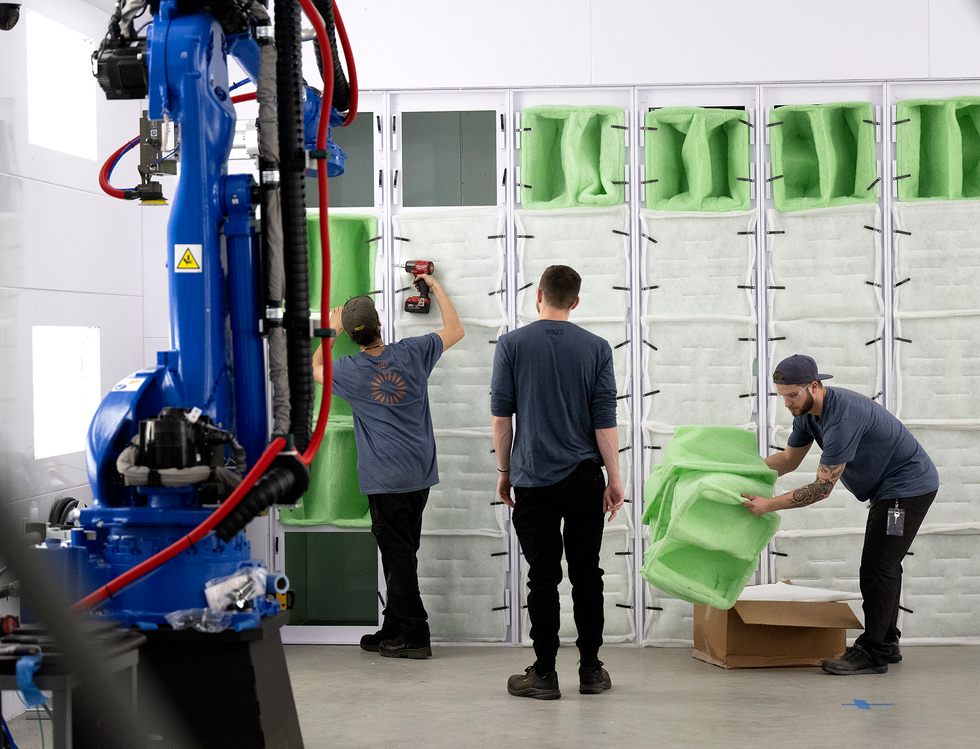
CFS

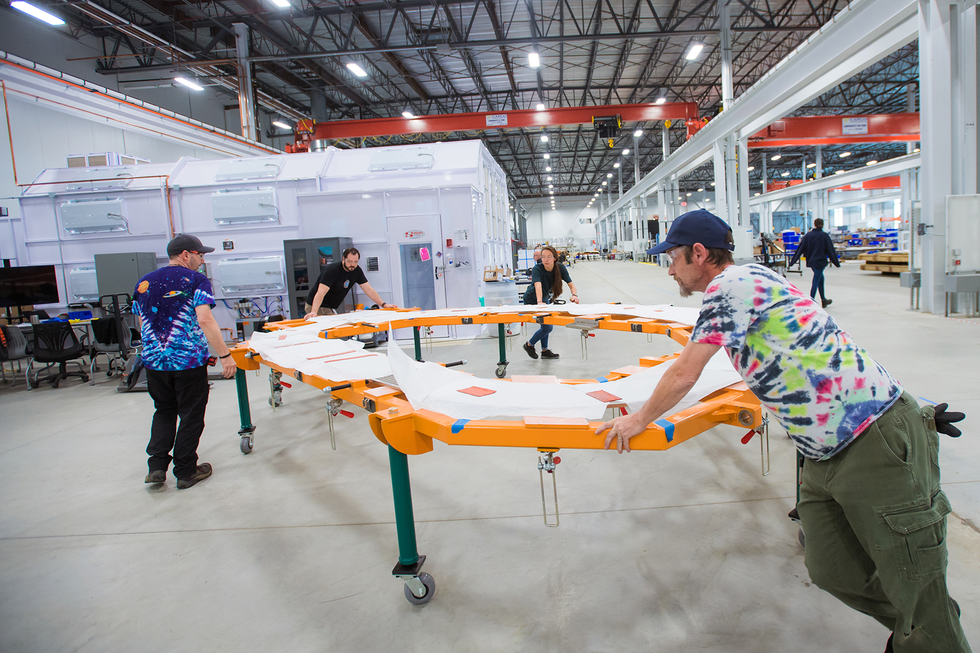
CFS
The working design calls for a continuously flowing loop of salt to be pumped into a tank surrounding the plasma chamber, where it absorbs radiated neutrons. The molten salt is then pumped outside the tokamak, where its heat energy is transferred into a fluid that drives a turbine to generate electricity. Because nearly all of the power that Arc produces will be absorbed in the molten-salt blanket, the load on the magnet-cooling system is minimized.
The molten salt will likely be a mixture of lithium fluoride and beryllium fluoride, known as FLiBe. This combo allows the salt to do double duty as a breeding medium in which some of the fusion neutrons interact with lithium atoms and change them into tritium. The tritium is then filtered out of the blanket and recycled into fusion fuel.
FLiBe is the focus of an ongoing research partnership with MIT’s Plasma Science and Fusion Center, funded by
ARPA-E. It’s one of several DOE programs that are pushing fusion research forward with grants and pairings between private industry and DOE’s national laboratories. But whether FLiBe will work better than other approaches—if at all—is still an educated guess.
The DOE-funded research collaboration illustrates the difference in approaches between countries. In most nations, fusion is pursued within government-specified development pathways.
“In the United States our new strategy to accelerate fusion energy R&D is to partner with the private sector, targeting public funding in ways that leverage and encourage private capital flow to a diversified portfolio of fusion technological and commercialization approaches,” says Scott Hsu of the DOE, which in May announced $46 million in milestone-based funding to advance commercial fusion development via public-private partnerships.
These investments, coupled with a steady stream of technical milestones, are boosting confidence in the possibility of an accelerating time scale for fusion power. In May, Microsoft signed the world’s
first-ever agreement to purchase fusion energy, from fusion startup Helion Energy. Helion’s plan for its reactor—currently under construction—is to produce 50 MW of power beginning in 2028. And a recent Fusion Industry Association survey of professionals working at private fusion companies found that 93 percent of respondents believe that fusion power will begin supplying electricity to the grid by the 2030s, up from 83 percent the previous year.
With the effects of climate change continuing to compound, that day can’t come soon enough for Sorbom and others in the industry, who are hoping to push their technologies forward to supply clean, carbon-free energy.
“Even though it’s still not happening fast enough, the progress we’ve made over the past decade feels kind of surreal,” says Sorbom. “Ten years ago, I was writing an academic paper about using HTS magnets to make fusion energy, and now we’re building them. I’m watching it happening all around me. Maybe there really is a future where we put thousands of these plants out to the world by 2050, and solve the climate crisis. That’s what I think about every time I drive into the parking lot.”
>>> Read full article>>>
Copyright for syndicated content belongs to the linked Source : IEEE – https://spectrum.ieee.org/fusion-2662267312


















